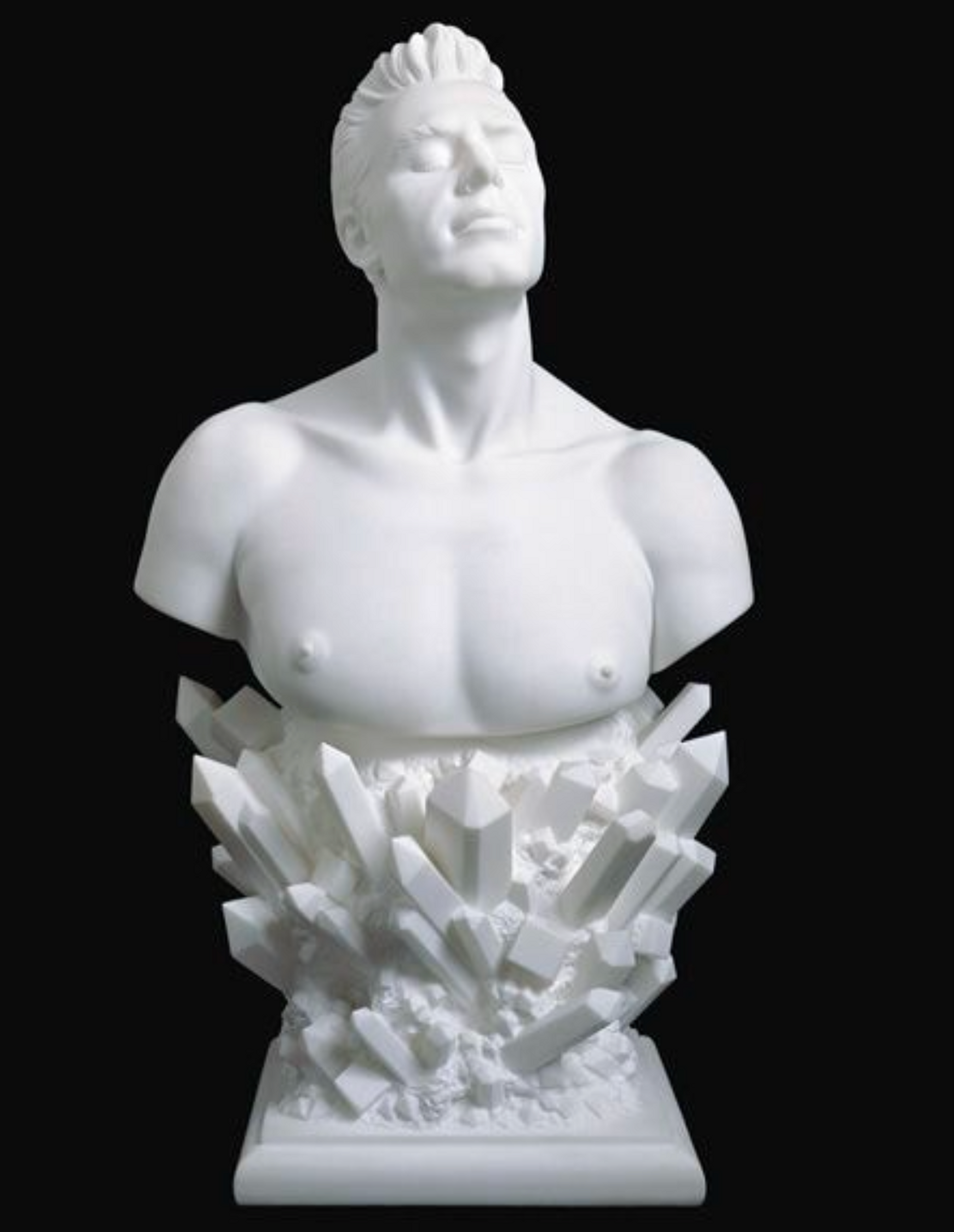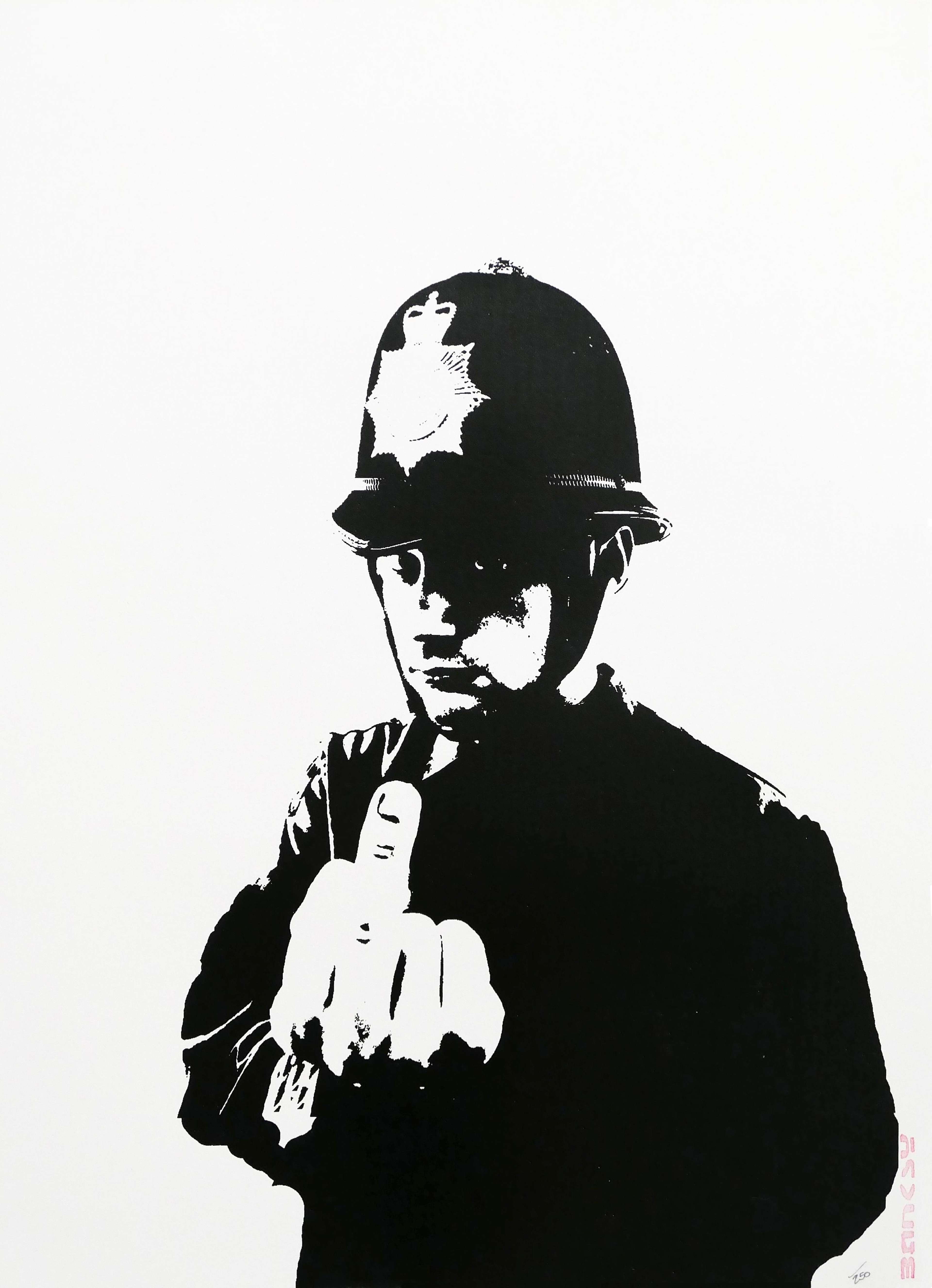 Image © Phillips / Me, May 2019 © Tracey Emin 2020
Image © Phillips / Me, May 2019 © Tracey Emin 2020Live TradingFloor
By referring to their own life experiences and emotions, the modern artist’s self portrait offers a personal insight into their livelihood. Fuelled by the artistic ego, are these famous self portraits narcissistic or a sharp exploration of the self?
Why do artists make self-portraits?
Sometimes the best muse for an artist is the artist themself. While many spend the majority of their careers representing other people, some artists choose to use the canvas as a space of introspective-exploration. The self portrait is a genre which has been a constant in the history of art, as artists continue to use their own experiences and emotions as an inspirational launchpad.
These portraits offer not only a glimpse into how the artist sees themself at the time of the work's creation, but also reveal the development of their technique and style. In making a self portrait, the artist therefore engages in an experimental exercise which pushes them to consult their own ego.
Here we look at a selection of self-portraits by Urban and Contemporary artists:
Andy Warhol
Usually an artist most comfortable when he is immortalising the celebrity, Andy Warhol’s self portraits reveal the artist’s personal struggles with his own identity. Warhol’s Self Portrait of 1966 is an unusual and provocative piece not merely because Warhol himself is the subject, but because there is no colour in the portrait whatsoever.
Unlike the typical Pop-Art vibrancy with which he captured his ‘Superstars’, Warhol renders himself in monotone black and white. While he transformed this self portrait into repeated colour prints at a later stage, this initial lithograph is possibly an instance where Warhol looks most human.
 Self Portrait © Banksy 2000
Self Portrait © Banksy 2000Banksy
Guerilla artist-cum-vandal Banksy has always been elusive. After years of conspiracy theories and attempts to catch the graffitist at work, Banksy has managed to preserve his anonymity.
When he produced his only known self portrait in 2000, Banksy teasingly covered his face and replaced it with a chimpanzee head in an explosive splatter of neon-yellow paint. Monkeys have been a constant motif in Banksy’s work used to satirise humanity, and here, the artist imagines himself as a monkey with a red laser target painted over one of its eyes.
Like the animal which has escaped from captivity, Banksy is always on the run from watchful eyes, and perhaps sees his innate freedom as anonymous artist perpetually at risk. Over the nozzles of his spray paints, Banksy has painted gun viewfinders, showing the spray cans to be his most salient weapon as an incognito artist.
Tracey Emin
Unlike Warhol and Banksy, who are perhaps more reluctant or tentative to capture themselves in their art, the majority of Tracey Emin’s oeuvre is inspired by the female artist’s own life experiences. Her autobiographical work offers viewers an emotive and intensely personal glimpse into her world.
Perhaps her most celebrated self portrait is My Bed (1998), where Emin staged the bed that she had spent a depressive phase of her life in — complete with empty alcohol bottles and used condoms. Emin’s entering of this piece in the 1999 Turner Prize exhibition was not only conceptually innovative, but rather brave, considering she showed the world the physical manifestation of her emotional traumas. Emin has always been unafraid to turn herself and her experiences into art.
Furthermore, the YBA artist’s self portrait I’ve Got It All sees her sweeping up money and scooping coins and banknotes towards her crotch. Like all of her self-referential work, this polaroid self portrait shows that Emin is unafraid to satirise her own ego to highlight the experiences and emotions we all feel, but might be too ashamed to confess to.
 Image © Christie's / Self Portrait, Marble © Jeff Koons 1991
Image © Christie's / Self Portrait, Marble © Jeff Koons 1991Jeff Koons
Neo-Pop master of the balloon animal, Jeff Koons is an artist who loves to add his kitsch spin on popular culture. When Koons turned his sculptorly skills to the subject of himself, he created a three-dimensional self portrait which idealised his appearance in marble like a Grecian God.
This self portrait is testament to the power of the artist’s ego, as Koons immortalises his seductive likeness magically emerging from the rocky formation below. Created for his series Made in Heaven, the sculpted bust forms part of a self-agrandising body of work in which Koons idealised himself not as man, but as god-like artist.
David Hockney
Pioneer of modern British art, David Hockney is another artist who has returned to his self portrait throughout his career. This 1980 lithograph is just one of over 300 self portraits that Hockney has created over the years in a myriad of media.
While Hockney usually opts for picturing himself with his trusty paintbrush in hand, as he scrutinously gazes out to the viewer, this self portrait pictures the artist thoughtfully looking out of the frame. There is a sincerity to this portrait that isn’t present in many of Hockney’s other self portraits, and presents the artist in a more intimate moment of introspection.
 Self Portrait: Reflection © Lucian Freud 1996
Self Portrait: Reflection © Lucian Freud 1996Lucian Freud
Expressive and intense, British contemporary artist Lucian Freud depicts human flesh and faces with an unflinching realism.
Freud’s 1996 etched Self Portrait: Reflection was his first formal self portrait to be published. By thickly laying ink on the printing palette, an approach likely inspired by Freud’s impasto painting technique, the artist creates stark and eerie shadows around his face and neck. The textured etching of the dim background gives this frontal self portrait invites us to inspect the asymmetry of his aging face.
Less egotistical than the self portraits of some of his contemporaries, Freud captured himself faithfully and imbued his portrait with an immersive quality. Whether in paint or print, Freud’s mastery of chiaroscuro and texture transform his self portraits into pictures which convey much more than what is seen at surface level.
 Image © Image of Jean-Michel Basquiat / Dmitri Kasterine © 1982
Image © Image of Jean-Michel Basquiat / Dmitri Kasterine © 1982Jean-Michel Basquiat
In Self-Portrait (1984), Jean-Michel Basquiat presents his face as a mask: bared teeth, searing red eyes, and the familiar spiked crown. Executed in acrylic and oilstick, the self-portriat conveys the strain of a body under scrutiny and a mind in tortured motion.
Shaped by early museum visits with his mother and his formative years writing graffiti across New York, Basquiat fused text and image to interrogate visibility, race and artistic authorship. His portraits, including this work, examine what it means to be a Black artist within a predominantly white art market. Here the crown fixes the viewer’s gaze while deflecting easy categorisation, and swagger and vulnerability co-exist, while the self is staged as a contested site - artist and commodity, subject and symbol - rendered with a defiant, uncomfortably candid clarity.
Yayoi Kusama
Yayoi Kusama’s Self-portrait, Kusama 217 (1995) distils her image into the very language that made her synonymous with repetition: a finely worked etching where features surface and dissolve amid nets and nascent dots. Intimate yet controlled, it shows line turning to pattern, likeness slipping towards infinity, and the artist folding herself into the system that defines her. In harnessing her iconic motifs, the self-portrait becomes a quietly revealing study of how Kusama sees, and subsumes, herself.










